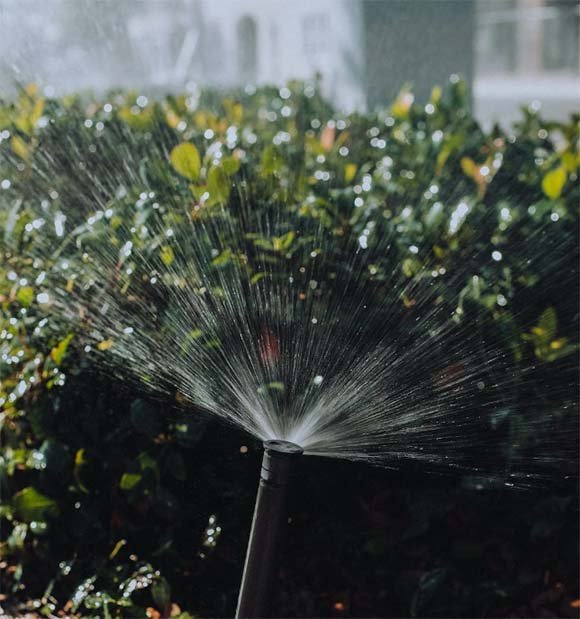Are you facing issues with your solenoid sprinkler valve? Don’t worry! This comprehensive guide will walk you through solenoid sprinkler valve troubleshooting and provide effective solutions to common problems. Read on to learn how to fix your sprinkler system and ensure a lush, green lawn.
Maintaining a healthy and vibrant lawn requires a well-functioning sprinkler system. One crucial component of this system is the solenoid sprinkler valve, which controls the flow of water to different zones. However, like any mechanical device, solenoid sprinkler valves can experience issues over time. In this guide, we will explore solenoid sprinkler valve troubleshooting and help you troubleshoot and resolve common problems you may encounter. So, let’s dive in!
Solenoid Sprinkler Valve Troubleshooting
The solenoid sprinkler valve is responsible for opening and closing the water flow to specific zones of your lawn. When this valve malfunctions, it can lead to a variety of problems, such as uneven watering, leaks, or no water flow at all. In this section, we will discuss the most common solenoid sprinkler valve issues and provide step-by-step solutions to fix them.
1. No Water Flow
If you notice that no water is flowing through your sprinkler system, the solenoid sprinkler valve may be the culprit. Here’s what you can do to troubleshoot the issue:
- Check the Water Supply: Ensure that the main water supply to the sprinkler system is turned on. Sometimes, the valve supplying water to the system may be accidentally closed.
- Inspect the Valve Wiring: Examine the wiring connections on the solenoid valve. Make sure they are securely connected. Loose or damaged wiring can prevent the valve from receiving the necessary electrical signals to open.
- Test the Solenoid: Use a multimeter to test the solenoid for continuity. If there is no continuity, it indicates a faulty solenoid that needs to be replaced.
2. Leaking Valve
A leaking solenoid sprinkler valve can waste water and result in soggy patches on your lawn. Follow these steps to troubleshoot and fix a leaking valve:
- Inspect the Valve Components: Check for visible signs of wear or damage, such as cracks or tears in the valve body or O-rings. Replace any damaged components.
- Tighten Loose Connections: Ensure that all the valve connections, including the solenoid and pipe fittings, are tightly secured. Loose connections can cause leaks.
- Clean or Replace the Diaphragm: If the valve diaphragm is clogged or damaged, it can cause leaks. Remove the diaphragm and clean it thoroughly. If cleaning doesn’t resolve the issue, replace the diaphragm.
3. Valve Not Closing Fully
When a solenoid sprinkler valve doesn’t close fully, it can lead to continuous water flow or insufficient pressure in other zones. Follow these troubleshooting steps to resolve this problem:
- Check for Debris: Inspect the valve diaphragm for any debris or dirt particles that may be preventing it from closing fully. Clean the diaphragm and ensure there is no obstruction.
- Adjust the Valve Screws: Some solenoid valves have adjustable screws to control the opening and closing of the valve. Adjust these screws according to the manufacturer’s instructions to ensure proper closure.
- Replace the Valve: If all else fails, it may be necessary to replace the solenoid sprinkler valve with a new one.
4. Zone Not Turning On
If a specific zone in your sprinkler system is not turning on, it could indicate a problem with the solenoid sprinkler valve. Follow these steps to troubleshoot and fix the issue:
- Inspect the Wiring Connections: Check the wiring connections between the controller and the solenoid valve. Ensure that they are securely connected and not damaged. Faulty wiring can prevent the valve from receiving the signal to open.
- Test the Voltage: Use a multimeter to test the voltage at the solenoid valve terminals. If there is no voltage or a significantly low voltage reading, it indicates an issue with the controller or wiring. Consult a professional for further assistance.
- Check the Valve Diaphragm: Examine the valve diaphragm for any damage or debris. Clean or replace the diaphragm if necessary. A faulty diaphragm can prevent the valve from opening and allowing water to flow to the specific zone.
5. Valve Not Opening Fully
When a solenoid sprinkler valve doesn’t open fully, it can lead to inadequate water flow and poor irrigation. Follow these steps to troubleshoot and resolve the issue:
- Inspect the Valve Solenoid: Check the solenoid for any debris or obstruction that may be preventing it from fully activating. Clean the solenoid and ensure there is no hindrance to its movement.
- Adjust the Valve Opening Time: If your sprinkler system allows for manual adjustment of valve opening time, try increasing the duration. This adjustment can help the solenoid valve open fully and allow adequate water flow.
- Check Water Pressure: Insufficient water pressure can also cause the valve to open partially. Ensure that the water pressure is within the recommended range for your sprinkler system. If the pressure is low, consult a professional to address the issue.
Frequently Asked Questions (FAQs)
- Q: Why is my solenoid sprinkler valve buzzing? A: A buzzing sound from the solenoid valve usually indicates an electrical issue. Check the wiring connections and ensure they are tight and secure. If the problem persists, it may be necessary to replace the solenoid.
- Q: Can I replace the solenoid on my own? A: Yes, replacing the solenoid is generally a straightforward process. However, if you’re not familiar with sprinkler systems or electrical work, it’s recommended to seek professional assistance to avoid any further damage.
- Q: How often should I clean the valve diaphragm? A: It’s a good practice to inspect and clean the valve diaphragm at least once a year or whenever you notice signs of debris or clogging. Regular maintenance will help ensure the proper functioning of the valve.
- Q: What causes a solenoid sprinkler valve to fail? A: Solenoid sprinkler valve failure can be caused by various factors, including age, electrical issues, debris accumulation, or damage to internal components. Regular maintenance and inspection can help prolong the lifespan of the valve.
- Q: How can I prevent solenoid sprinkler valve issues? A: Regular maintenance, including cleaning the valve components and checking the wiring connections, can help prevent many common solenoid sprinkler valve issues. Additionally, avoiding excessive water pressure and protecting the valves from freezing temperatures can contribute to their longevity.
- Q: Can a faulty solenoid valve affect water efficiency? A: Yes, a faulty solenoid valve can lead to inefficient water usages, such as leaks or uneven water distribution. Resolving solenoid valve issues through troubleshooting and repairs will help improve water efficiency and prevent wastage.
Conclusion
A properly functioning solenoid sprinkler valve is essential for maintaining a healthy and vibrant lawn. By following the solenoid sprinkler valve troubleshooting steps outlined in this guide, you can diagnose and resolve common issues with your sprinkler system. Remember to check the water supply, inspect wiring connections, clean or replace components, and adjust settings as necessary.
If you’re unsure about performing any of the troubleshooting steps or if the problem persists despite your efforts, it’s advisable to seek assistance from a professional sprinkler system technician. They have the expertise and experience to diagnose and repair complex solenoid sprinkler valve issues.
By keeping your solenoid sprinkler valve in optimal condition, you’ll ensure efficient water usage, uniform irrigation, and a beautiful landscape. Regular maintenance and periodic inspections will help prevent problems before they arise, saving you time, effort, and potential water wastage.
So, the next time you encounter an issue with your sprinkler system, don’t panic! Refer to this comprehensive solenoid sprinkler valve troubleshooting guide to identify the problem and take the necessary steps to resolve it. Enjoy a lush, green lawn all season long!



